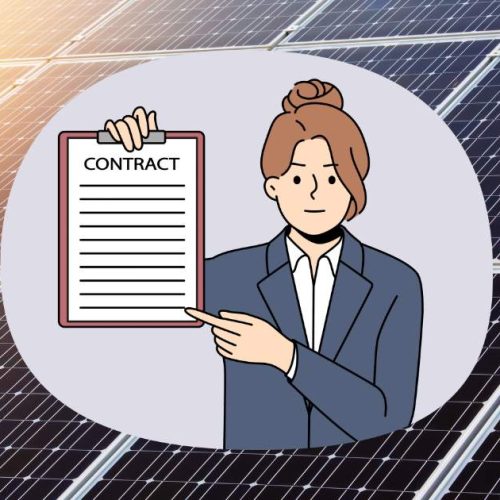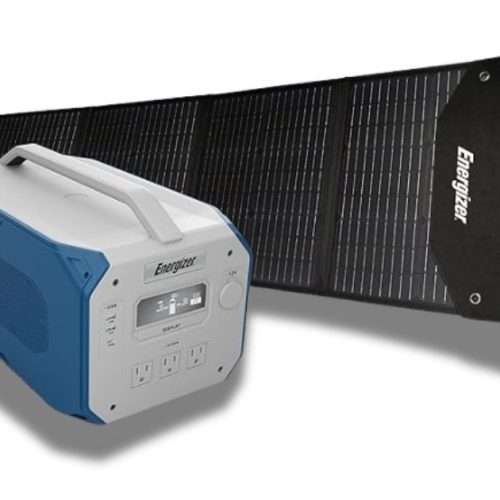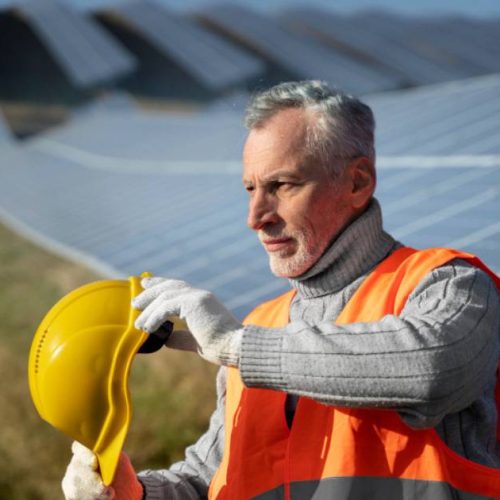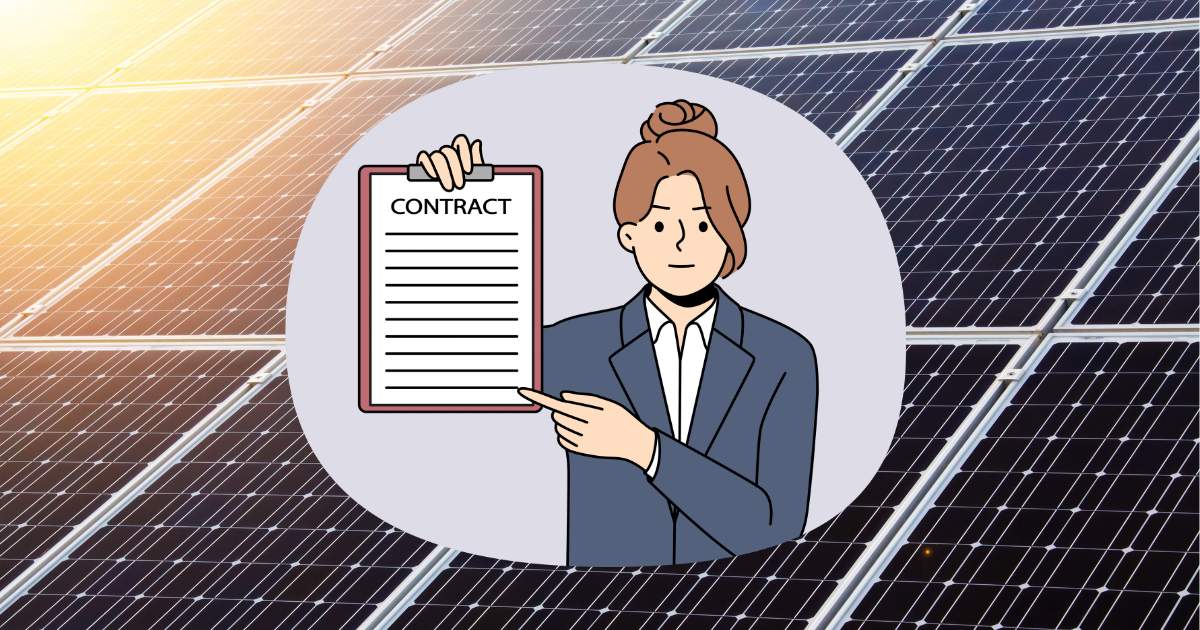Many homeowners consider adding more solar panels to their existing systems themselves to save on installation costs. However, whether you can do it yourself depends on several factors that need to be carefully considered. So let’s know Can I Add Solar Panels to My Existing System Myself?

Can I Add Solar Panels To My Existing System?
Technical Skills
Electrical Knowledge: Solar panel installation requires good knowledge of electrical systems. For your existing inverter, you will need to properly wire the old panels to the new panels and make sure they fit together seamlessly.
Mechanical skills: Installing the panels involves mounting them securely to your roof, which requires tools and knowledge of the roof structure.
Safety Concerns
Electrical Safety: Working with electricity can be dangerous. Improper installation can cause electrical fires, short circuits, or even electrocution.
Physical Safety: Installing roof panels requires working at heights, which can be hazardous without proper safety equipment.
Permits and Inspections
Local Regulations: Permits are required for solar installations in most areas. This ensures that the system meets safety standards and building codes.
Inspection: After installation, your system may need to be inspected by local authorities to ensure compliance with regulations.
System Compatibility
Panel Compatibility: Make sure the new panels match the specifications of your existing ones, including voltage, current, and wattage.
Inverter Capacity: Your current inverter must be able to handle the additional power from the new panels. Otherwise, your system may need to be upgraded.
Warranties and Insurance
Void Warranty: DIY installation may void the warranty of your current system components.
Insurance issues: Improper installation can affect your home insurance policy, especially if it leads to damage.
While it’s technically possible to add solar panels to your existing system, it’s often safer and more reliable. Hiring a professional installer can ensure that the job is done correctly and in compliance with all regulations.

Can I Add Extra Solar Panels to an Existing System?
Yes, you can add additional solar panels to an existing system. Here are the detailed steps and considerations involved:
Assess Your Current System
Current system capacity: Determine if your current inverter can handle additional panels. Most inverters have a maximum input power that should not be exceeded.
Energy production needs: Analyze your current and projected energy consumption to determine how many additional panels you need.
Check Compatibility
Panel Specifications: Make sure the new panel matches the electrical specifications (eg, voltage, current) of your existing panel.
Mounting system: New panels should fit your existing mounting system, or you may need to adjust or add new mounting hardware.
Obtain Necessary Permits
Local Permits: Check with your local building department to find out what permits are required. The permitting process ensures that additions comply with local building codes and safety standards.
Utility company approval: Some utility companies require approval for modifications to your solar system, especially if you participate in a net metering program.
Install the Panels
Mounting: Securely mount the new panels to your roof, making sure they are properly aligned and positioned for maximum sunlight exposure.
Wiring: Connect the new panel to your existing system. This involves wiring the new panel to your existing combiner box and inverter.
Inspection and Testing
Professional Inspection: Have a certified electrician or solar installer inspect the installation to ensure it meets all safety and code requirements.
System Testing: Test the system to make sure the new panel is properly integrated and working as expected.

How Many Solar Panels to Add to a House?
There are several key considerations in determining the number of solar panels to add to your home:
Energy Consumption
Calculate Usage: Review your electricity bill to determine your average monthly energy consumption in kilowatt-hours (kWh).
Future Requirements: Consider any future changes in energy use, such as adding electric vehicles or other large appliances. Install your solar system considering your current and future total energy needs
Roof Space
Available Space: Measure the amount of space you have on your roof. Make sure there is enough blocked area for additional panels.
Panel size and efficiency: High-efficiency panels produce more energy per square foot, allowing you to maximize energy production in limited space.
System Capacity
Inverter Limits: Check your existing inverter capacity. If it cannot handle the additional panels, you may need to upgrade to a larger inverter
Current System Output: Evaluate your current system output and consider how much more power you need to meet your power goals.
Sunlight Exposure
Shade Analysis: Make sure the new panels will get enough sunlight. Avoid areas where shadows may be cast by trees, buildings or other obstructions.
Orientation and Tilt: Panels should be oriented and tilted to maximize sun exposure, usually facing south in the northern hemisphere.
Budget
Cost of panels: The cost of solar panels varies, so consider beforehand how much you are willing to invest.
Installation Cost: Factor in the cost of installation including any upgrades required to your system.
Considerations Before Adding Solar Panels to an Existing System
Before adding solar panels to your existing system, here are several important considerations to keep in mind:
Compatibility
Inverter Capacity: Make sure your current inverter can handle the additional panels. If not, it may need to be upgraded.
Panel Match: First make sure the new panel’s electrical specifications (eg, voltage, wattage) match your existing panel for optimal performance.
Energy Needs
Current Usage: Assess your current energy usage and determine if your demand has increased.
Future costs: Consider potential increases in energy costs, such as adding an electric vehicle or expanding your home.
Roof Condition
Structural integrity: Inspect your roof to make sure it can support the added weight of the new panels. Repair any damage before installation.
Roof lifespan: If your roof is nearing the end of its lifespan, it may be wise to replace it before adding more panels.
Permits and Regulations
Local Building Codes: Make sure you understand and comply with local building codes and regulations.
Home Owners Association (HOA) Rules: If you live in a community with an HOA, check their rules regarding solar panel installation.
Cost
Budget Planning: Consider the total cost, including panels, installation, possible upgrades, and permits.
Financial incentives: Look for available incentives, rebates, or tax credits that can reduce overall costs.
Performance and Efficiency
System Monitoring: Use a monitoring system to track your solar power generation and ensure that your system is operating efficiently.
Maintenance: Regularly clean and maintain your panels to ensure optimal performance.

When Is Adding More Solar Panels a Bad Idea?
Adding more solar panels isn’t always the best decision. Here are some situations when this might be a bad idea:
Limited Roof Space
Maximum space: If your roof space is already fully utilized, adding more panels will not be possible without significant modifications.
Shading Issues
Insufficient sunlight: Panels installed in shaded areas will produce less energy, reducing the overall efficiency of your system.
Seasonal changes: Consider how sunlight exposure changes with the seasons and potential shade from growing trees.
System Imbalance
Inverter Overload: Adding more panels than your inverter can handle can cause inefficiency and potentially damage the system.
Mismatched panels: Using panels with different specifications can cause an imbalance in power generation.
High Installation Costs
Low ROI: If the cost of adding more panels is too high compared to the expected energy savings, it may not be a good investment.
Financial Considerations: Consider whether the repayment period and investment are compatible with your financial goals.
Local Regulations
Restrictive Codes: If local building codes are very restrictive, the process of adding more panels can be complicated and expensive.
Utility company limits: Some utility companies limit the amount of solar power you can generate and feed into the grid.
Grid Limitations
Net Metering Caps: If you are already within the limits of what your utility company allows for net metering, adding more panels will not provide additional financial benefits.
Grid infrastructure: Local grid infrastructure may not support additional solar power input, resulting in potential problems with energy export.
How Much Does It Cost to Add Solar Panels to an Existing System?
The cost of adding solar panels to an existing system varies based on several factors:
Number of Panels
Panel Cost: Solar panels typically cost between $200 and $400. The more panels you add, the higher the overall cost.
Solar Panels Installation
Labor Cost: Professional installation can range from $3,000 to $10,000, depending on the complexity of the job and local labor rates.
Mounting Hardware: Additional mounting hardware may be required, which may add additional cost.
Upgrades
Inverter Upgrades: If your current inverter cannot handle the additional panels, upgrading to a larger inverter can cost $1,000 to $2,000.
Electrical work: Upgrading wiring, circuit breakers, and other electrical components will also add to the cost.
Permits and Fees
Permit Fees: These vary by location but generally range from $100 to $500.
Inspection Fee: Some areas require an inspection fee, adding to the overall cost.
Incentives
Tax Credits: Federal and state tax credits can significantly reduce costs. The federal solar tax credit provides a percentage of the installation cost as a tax credit.
Rebates: Local rebates can also help offset the initial investment.
Perfecting
Adding solar panels to your existing system can significantly increase your home’s energy efficiency and reduce electricity bills. However, it is crucial to carefully evaluate all factors before proceeding. Consider your technical skills, security, system compatibility, and financial implications. While DIY installation is possible, hiring a professional often ensures that the job is done safely and correctly, in compliance with all local regulations.
By evaluating your energy needs, roof space, and budget, you can make an informed decision about how many panels to add. Remember to account for potential upgrades and the cost of permits and inspections. The burden may not be beneficial when adding more panels to avoid unnecessary costs and inefficiencies.
With careful planning and consideration, expanding your solar system can be a smart investment that pays off in the long run through energy independence and savings on your utility bills.









